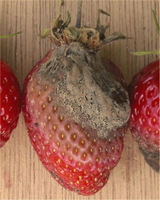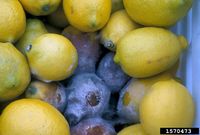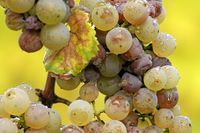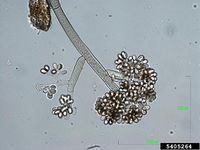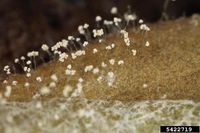Botrytis cinerea
| Literature database |
|---|
| 1692 articles sorted by: |
| • year (descending) |
| • research topics |
| • countries/regions |
| • host plants |
| • list of antagonists |
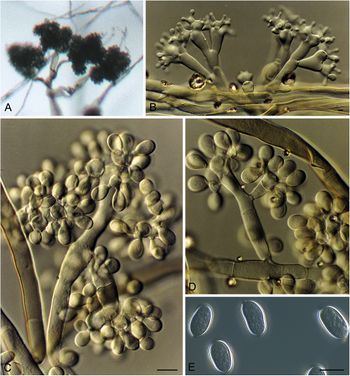
Authors: P.W. Crous et al.
Source: Studies in Mycology (2019) 94, p. 143
Botrytis cinerea Pers. 1794 - (grey mould or gray mold)
This fungus is ubiquitous and can infect a large variety of fruits, e.g. grapes or strawberries, other crops, as well as flowers (blossom blight). Infections may be beneficial on certain grape varieties and regions of France ('pourriture noble'), but normally the fungus causes complete destruction of grapes. Often it is also a storage problem on fruits. The fungus enters the fruits through small wounds and thrives when conditions are humid and temperate (15-25°C). Parts of the fruits and crops rot and become covered by mycelium, first white and then greyish.
The fungus spreads through the air or rain splashes and persists in the environment in mummified fruits or, less often, as sclerotia which are 2-5 mm large. Fungicides are often applied to control grey mould. Sanitation (removal of infected fruits) and dry storage conditions are also advised.
| Vernacular names | |
|---|---|
| • Deutsch: | Grauschimmel Rotspitzigkeit (Hopfen) Botrytis-Fäule |
| • English: | grey mould or gray mold |
| • Español: | podredumbre ácida de la vid |
| • Français: | moisissure grise maladie de la toile pourriture grise |
| • Português: | mofo cinzento |
The conidia have an elliptical shape and are about 8-12 x 6-8 µm large. Sexual reproduction has been observed, but is rare.
Synonyms:
Botryotinia fuckeliana
Sclerotinia fuckeliana
For a review of grey mould of strawberry see Petrasch et al. (2019).
- Other images of Botrytis cinerea (Wikimedia Commons and IPM Images - click to enlarge)

